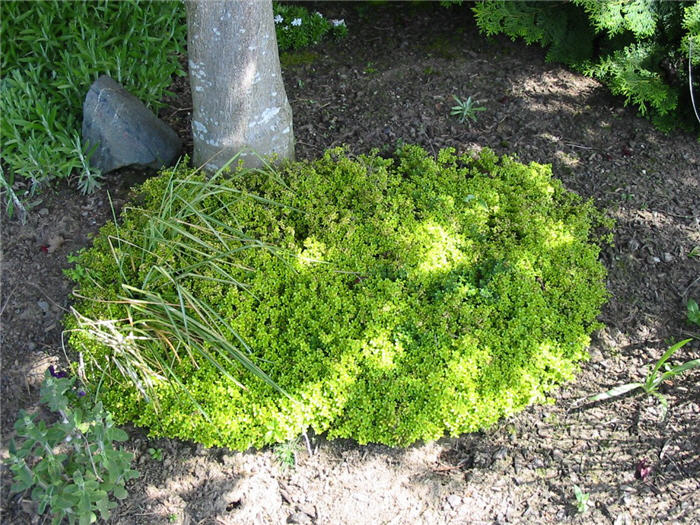| Botanical Name: Thymus x citriodorus 'Aureus' | |
| Common Name: Golden Lemon Thyme |

-
Anatomy
-
Culture
-
Design
Plant Type
Perennial, Herb
Height Range
Under 1'
Flower Color
Pink
Flower Season
Summer
Leaf Color
Light Green, Yellow Green, Yellow, Variegated
Bark Color
n/a
Fruit Color
n/a
Fruit Season
n/a
Sun
Full
Water
Low, Medium
Growth Rate
Moderate
Soil Type
Sandy, Clay, Loam
Soil Condition
Average, Rich, Poor, Well-drained, Dry
Soil pH
Neutral, Basic
Adverse Factors
Attracts Bees
Design Styles
English Cottage, Mediterranean, Ranch, Spanish
Accenting Features
Fragrance, Unusual Foliage
Seasonal Interest
Spring, Summer, Fall
Location Uses
Perennial Border, Swimming Pool, Walkways, With Rocks
Special Uses
Container, Cut Flowers, Small Spaces
Attracts Wildlife
Butterflies
Information by: Stephanie Duer
Photographer: Tina Olsen Binegar
Photographer: Tina Olsen Binegar
-
Description
-
Notes
Golden lemon thyme is a deciduous perennial with a mounding to upright habit, growing about 6 to 10 inches tall and wide. Foliage emerges a bright green with yellow margins, and holds the variegation all summer. Flowers are pink and bloom early to mid summer. Foliage has an intense lemon scent, and is useful as a culinary herb. The fragrance is so wonderful, it makes weeding a joy. This thyme is a little too tall be be a good groundcover, but its wonderful along the edges of paths or walks, in an herb garden, or tucked into a sunny perennial border.
Grow in well drained soil in full sun; though it will tolerate part shade, the foliage coloration may become less pronounced and the plant may become a little thin. Adaptive to a variety of soils, as long as they are well draining. The foliage gives a lemony scent to sauces, marinades, stocks, and vinaigrettes, as well as to teas. Snip of stems as necessary for cooking, shear off flowers after blooming, or cut back hard in early spring.